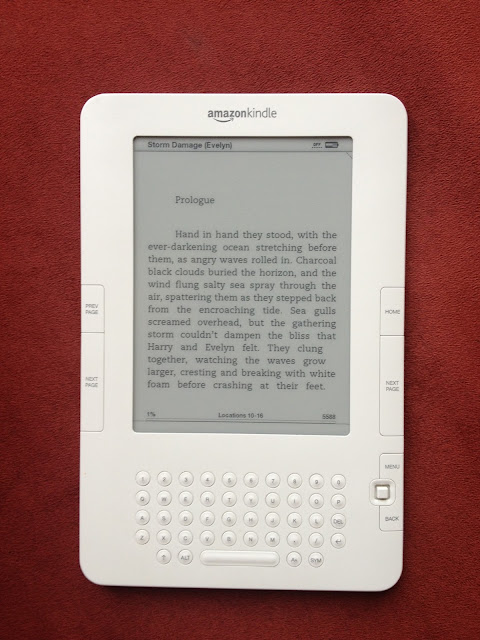Tuesday, September 16, 1986, was just another school day for
most of us kids. We lived in a small community of 5,000 people and nothing much
ever happened here. Oh, sure, there was the occasional escaped elephant from the circus or tragic incident on the river, highway, or farm fields that hemmed
us in, but for the most part the days all tumbled one after another in a
monotonous fashion.
That was, until my friend received a message at the middle
school near the end of the day that Tuesday, instructing her not to go home.
“Why can’t you go home?” we asked her.
“Because there’s a crime scene next door.”
My friend lived in a duplex just a couple blocks west of the
middle school, and as soon as the last bell rang for the day we took off for her
house.
We had to skirt a growing number of cars parked on
neighboring streets, crime scene tape, and groups of people standing around
staring, yet we were able to maneuver close enough until we were standing
directly across the road from the scene of the crime.
My friend lived in the right side of the duplex and a pair
of garages sat side-by-side in the middle of the building. On the left side’s
driveway was a pick-up truck with the tailgate hanging open. And there, on the
ground behind the truck and right in full view of us, was a white sheet draped
over what could only be a body.
A police car and another truck were parked at the curb
inside the crime scene tape. The rest of the police cars were not a part of the
crime scene but a part of the investigation.
No one in the crowd really knew what was going on, but we
all had guesses. The most logical conclusion in my mind was that the person
under the white tarp had been shot by the police officer. But what happened
that the police officer had needed to shoot him? My 13-year-old mind surveyed
the area for clues. The open gate on the pickup seemed to say that there was
something in the back that was important. Drugs, perhaps? And maybe when the
man realized that he had been caught with an illegal substance he put up a
fight or brandished a weapon, and therefore the officer shot in self defense.
In a logical world, this might have been how it went. Yet as
we soon found out, it was decidedly more disturbing than that.
My friend’s next-door neighbor, shot dead in his driveway,
had indeed had drugs in his truck. But that was about as accurate as my sleuthing
got.
Just two days earlier, on September 14, 1986, President
Reagan addressed the nation in a speech that would become famous as his “Just
Say No” war on drugs. His anti-drug message hit home with many people,
one of whom was an off-balance police officer.
Two days later, as the officer was on duty in our small
town, he got a call about a man who had been seen with marijuana in the back of
his truck. A citizen had seen this man harvesting marijuana in a local park. A
warden for the DNR who was in the area was also notified and followed the man
in his truck back to his home, next door to where my friend lived. The warden
parked his truck at the curb and waited for the officer to arrive.
When the police officer arrived, he asked the suspect to
step out of his truck. The police report states that a brief struggle ensued
but the officer and warden managed to subdue the man. He was placed facedown
onto the driveway with his hands handcuffed behind his back. The suspect was
frightened by the officer’s aggressiveness, so the warden kindly told him,
“I’ll make sure no one hurts you.”
The warden checked
the back of the truck for marijuana and then asked the officer for evidence
bags. The officer said they wouldn’t be necessary. Standing over the man with
both hands on his gun, the officer then proceeded to unload two rounds from his
service revolver into the back of the man’s head as he lay face down on the
ground.
The warden, fearing for his life, asked if the officer was
going to shoot him, too. He replied that he was not. The officer then put his
weapon away and took off the dead man’s handcuffs. The warden retreated to his
truck, placed his own gun on his lap for protection, and radioed for help.
The officer had a history of psychosis and had gone off his
medication days earlier. When the officer’s home was later searched, they found
a large amount of Reagan paraphernalia, such as bumper stickers, buttons,
posters, and even letters that he had written to Ron and Nancy. The officer was
convicted and sentenced to life in a mental institution.
I didn’t know the depth of the tragedy that day as I stood
in the late summer sunshine. Even as the man’s body lay yards from me, I still
believed that death was something that happened to other people and for logical
reasons. But after that day some of our town’s innocence was lost, and perhaps
some of my own.
(*Endnote: I have to believe that those involved in this day
have seen their name connected to this tragic event more than they wish.
Therefore I have decided to leave out any identifying names because the last
thing they need is another rehashing of this murder the next time they Google
their name or the name of their loved one. One curious note, however, is that
all three men’s first names were John.)

